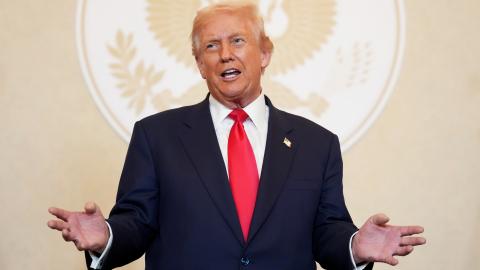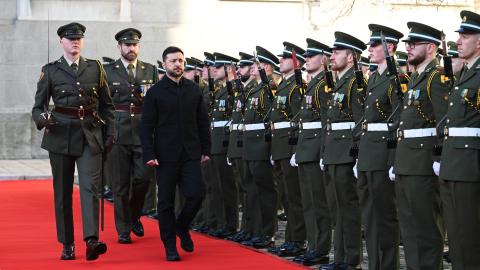American sea power — represented by the forces of the U.S. Navy and U.S. Marine Corps — provides for the security of a global system of ocean-borne commerce that impacts our economy here in Maryland to a degree not commonly understood. I have begun a speaking tour of the state to help increase Marylanders' knowledge of this critical fact.
The Port of Baltimore is a terminus in a global system of trade that works to the benefit of all Americans. Movement of cargo through the port is responsible for $59 billion in economic activity annually and over 230,000 jobs, directly and indirectly.
If we look at the nation's 57 seaports in the aggregate, their economic impact amounts to over 23 million jobs and over $4.6 trillion — a quarter of our nation's gross domestic product. This economic strength is the foundation of our military, diplomatic and political influence in the world, and these attributes reinforce each other to sustain our position as the world's dominant power.
Freedom of the seas is the irreducible minimum condition for global trade, and it is the primary reason for our large, powerful and globally employed Navy. No nation on earth has commercial and diplomatic interests as widely flung as the United States, and no nation on earth has to be able to transport its military power thousands of miles across the world to protect those interests. Those distances and these requirements are why our Navy is both large and powerful, with combat power designed to impose its will at sea to influence events on land. Its forces are already located where our interests lie.
In addition to protecting the nation's security and prosperity, the Navy, while built to impose America's will at sea, is equally useful in demonstrating the compassion of the American people when disaster strikes. The Navy and Marine Corps Task Force recently dispatched to the Caribbean in the wake of Hurricane Matthew was just the latest example of this most charitable impulse, which has been demonstrated across the globe in response to myriad disasters.
Unfortunately, we have allowed our Navy to fail to keep up with the requirements we place upon it. As a result, the Navy is stretched thinly, with ships and aircraft worn out before their time, and Navy families more often separated for longer periods of time.
Today's fleet of 272 ships (less than half its size during the Cold War) is too small for what we ask of it. And what we ask of it is dangerously misaligned with the requirements of a Navy sufficient to deter China, Russia, North Korea and Iran, and to conduct operations against ISIS.
As a nation, we justifiably reaped a peace dividend when the Cold War ended, but the rigors of great power competition are again upon us, whether we name them or not. Russia and China are making considerable improvements to their fleets, as well as to land-based capabilities designed specifically to deny freedom of the seas in their near abroad. We must place a greater priority on growing our Navy even as we improve its capabilities.
Many argue that today's ships and weapons are so sophisticated that surely we don't need as many of them. This logic fails, however, when we consider that our fleet is not the only one that has added sophisticated ships, and that no matter how sophisticated a ship may be, it can still be in only one place at a time.














